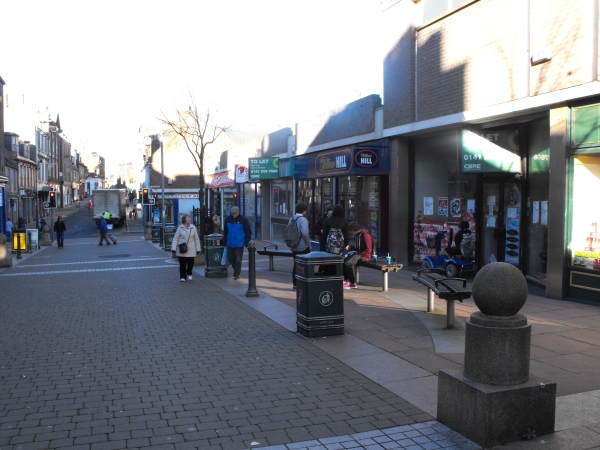A new study looks at what the Dutch have been doing to revitalise the centres of medium-sized towns.
The plight of town centres, particularly in medium-sized towns, across Europe and North America, has been a concern to planners and local politiicans for a generation. In England, the Portas Report (2011) pointed to “ a new shopper mindset“, and called for the investment of new social capital in the high streets to attract economic capital. Amongst the recommendations were the creation of Town Teams, free parking and deregulation of market trading. In Scotland, prominent architect Malcolm Fraser led an expert group that reported to the Scottish Government. Amongst their recommendations were:
- A ‘town centre first’ principle whereby public bodies will consider how they can support town centres before considering development elsewhere
• Working with housing providers to bring empty town centre properties back into use as affordable housing
• A town centre focus to review business rates incentivisation schemes
• Public bodies should consider the impact of proposals to relocate services out of town centres
• Broadening the appeal of town centres with a mix of leisure, public facilities and homes.
Now an article in the journal European Spatal Research and Policy reviews attempts in The Netherlands to tackle the same issues. Gert-Jan Hospers notes the rising proportion of shops that are empty in Dutch medium-sized towns, where average retail vacancy had reached 11.9% in 2016. He refers to the „spiral of decline of the streetscape“ that results. Hospers points to the usual suspects – online retailing and changing consumer preferences. However, he also notes that retail space across the Netherlands actually increased by 15% between 2003 and 2010. Many towns were doing deals with developers as they sought to compete for shoppers.
Town centre attractivenes
Hospers argues that three qualities are necessary to make a town centre attractive to consumers, It must be compact; have a human scale; and a unique profile.
Vacant shops beget more vacant shops as consumers shun parades pock-marked with empty units. The externalities generated for traders by clustering flip from posiive to negative. Hospers dismisses the temporary fix that pop-ups can provide. A more radical alternative is a planning instrument known as „retail land redjustment“, which promotes exchanges between retailers in declining streets and properties in streets that are prospering. Local councils act as brokers in the process and help set compensation. The scheme succeeded in Deventer(a town of 99,000), but in Dordrecht (118,500) the property owners could not reach agreements. Legislation is expected to break such deadlocks.
One way to audit attractiveness is to conduct a „consumer journey“, tracking the experience at a sequence of „touch points“. In response, some towns have sought to make their centres more „convivial“ with public realm interventions such as better signage, repaving, traffic management, or as in the case of Leiden, by shopfront enhancement schemes.
Branding
Each town centre needs its unique selling point. Ideally this should build upon the identity of the place. Thus Gouda is the „cheese city“, with markets, walks and festivals all cheese-themed. in contrast, Leerdam does not play on its cheese, but rather its glass manufacturing tradition. It is home to the National Glass Museum and the Glass Factory. Glass sculptures around the town centre strengthen the narrative of „the town of glass“.
Stakeholder partnerships
Involvement of stakeholders is widely recognised as assisting the implementation of schemes to revitalise town centes. However, as Hospers notes, it is often problematic. There can be free-riders, happy to take the benefits of a town centre marketing scheme, without contributing to the costs. In Bergen op Zoom the retailers and the council fell out with each other, and the centre continued to decline. In response the council set up a „Town Centre Laboratory“ in a vacant shop, where the citizens could walk in and leave their ideas. Similarly, Doetinchem set up a „Downtown Future Lab’“ though property owners have not taken an active role. In contrast the town of Roosendaal spent three years getting the retailers onside for promotion of a „Smart Retail City“.
Reflections
A few years ago I did some work on small towns in Scotland, which highlighted similar issues. In general planning systems were designed to manage growth pressures rather than decline. They struggle when faced with a lack of demand for sites and properties. In town centres, upgrading of the public realm can certainly make a place more attractive, but by itself is not enough. Stronger powers and political will are needed to grapple with problems of absentee property owners, along with skills in building a consensus amongst diverse stakeholders.

Schreibe einen Kommentar